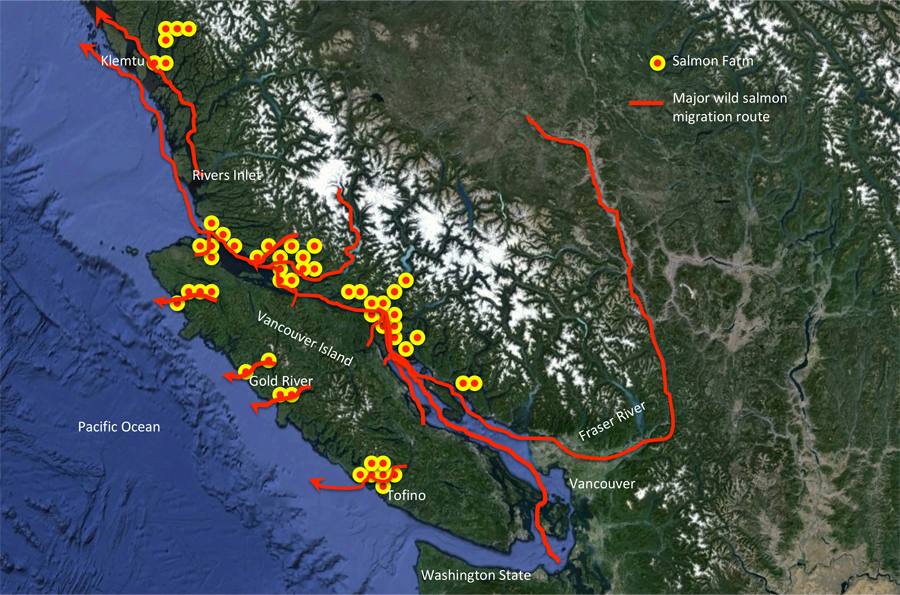Where the Salmon Farm Industry Operates
In 1987, fish farms were first proposed for Musgamagw Dzawada’enuxw Territory (Broughton Archipelago).
The provincial government asked for community input on where fish farms should not be sited in the archipelago. Fishermen, tourism operators and other local interest groups responded.
They were asked to mark out areas on a map where they knew salmon farms would conflict with rich fishing areas, tourism, and the people living in the region. Raincoast Research was asked to identify essential habitat for humpbacks, orca and other whale and dolphin species.
The Province of BC produced a map with “red zones.” The community was assured these ‘red zones’ would be kept free of fish farms. Yet within a year, more salmon farms were operating in the red zones than in the areas originally set out for fish farms. Public trust was breached, the ecosystem was put at serious risk and First Nations denied the opportunity to protect their waters.
Today
In 2016, the Fraser River sockeye salmon crashed to the lowest levels in history.
In 2011, the federally-funded Cohen Commission made 75 recommendations to restore the Fraser River population. Of the eleven made to the salmon farming industry, three addressed where salmon farms are sited. None of these recommendations has been acted on:
- #15 – The Department of Fisheries and Oceans should explicitly consider proximity to migrating Fraser River sockeye when siting salmon farms.
- #16 – After seeking comment from First Nations and stakeholders, and after responding to challenge by scientific peer review, the Department of Fisheries and Oceans should, by March 31, 2013, and every five years thereafter, revise salmon farm siting criteria to reflect new scientific information about salmon farms situated on or near Fraser River sockeye salmon migration routes as well as the cumulative effects of these farms on these sockeye.
- #17 – The Department of Fisheries and Oceans should apply revised siting criteria to all licensed salmon farm sites. Farms that no longer comply with siting criteria should be promptly removed or relocated to sites that comply with current siting criteria.
The federal and BC provincial government are still granting new farms and allowing expansion of existing farm in the archipelago and coast wide. They are doing so despite growing international understanding that wild salmon populations are:
- in exceptional decline where there are salmon farms
- doing well, where there are no salmon farms (Myers and Ford, 2008)

